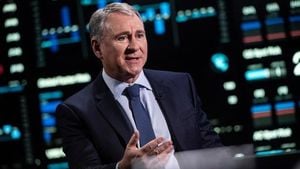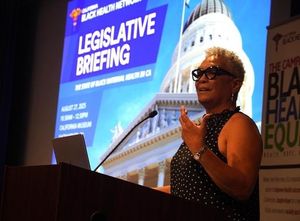New York City’s controversial congestion pricing program has sparked intense debate as political leaders navigate the intersection of local transit improvements and federal oversight. Implemented on January 5, 2025, the program charges drivers up to $9 for entering parts of Manhattan below 60th Street, with the intention of alleviating traffic congestion and generating funds for the city's aging public transit infrastructure.
Governor Kathy Hochul recently engaged with President Donald Trump over the program, underscoring the significance and urgency of discussions surrounding its future. Despite Trump's past criticisms, Hochul remains steadfast, stating, "I don't know what the outcome will be. All I know is, I'll always go to battle and fight" (WABC). Having rebuffed attempts by the Republican Congressional delegation to scrap congestion pricing, she insists on showcasing its potential benefits.
So far, the implementation of congestion pricing has yielded noticeably shorter travel times and less congested streets, with the Metropolitan Transportation Authority (MTA) reporting up to 1 million fewer vehicles entering congested areas of Manhattan since the program's inception. MTA Chairman Janno Lieber expressed optimism, affirming, "We're very optimistic... this program is very solid" (WABC).
Yet, as Hochul lobbies to retain the program, challenges loom larger than anticipated. Trump reportedly hinted at reconsidering federal approval associated with congestion pricing amid pressure from local Republican lawmakers who seek to dismantle it. Despite Hochul’s informal conversations with the President, she has been candid about the opposition, stating, "[Trump] and the people around him have said they are not supporting this" (WABC). That reflects the wider narrative as some GOP members voice concerns about the financial burdens placed on commuters.
"Instead of constantly taking money from hardworking New Yorkers..." criticized Rep. Nicole Malliotakis during recent statements (NY1), underlining the discontent many feel toward the tolling system. Other Congressional representatives, such as Rep. Mike Lawler, have mirrored these sentiments, emphasizing their belief it is detrimental to commuters. Such criticisms have emboldened local and state-level discussions centered around the sustainability and practicality of congestion pricing.
The controversy has ignited discussions not only about the tolls but about overarching issues of federal funding for transportation initiatives. U.S. Department of Transportation Secretary Sean Duffy's orders have reportedly introduced new funding criteria which could jeopardize certain projects, particularly those involving immigration enforcement compliance. Given New York's status as a sanctuary city, concerns are mounting over whether the MTA can expect the $15 billion it hopes to raise from congestion pricing for transit development projects.
Meanwhile, Hochul’s defense of congestion pricing revolves around its role as a financial lifeline to improve the city's public transport. The collected funds are earmarked for major infrastructure updates, including modernizing subway signal systems and enhancing accessibility for passengers with disabilities. "America’s economy relies on New York City, and New York City relies on public transit," Hochul’s spokesperson noted, stressing the economic imperative behind the tolls.
Despite apparent advantages, mixed reactions from the driving public continue to add fuel to the fire. While some applaud the program for expediting commutes—"Finally, I can get to work on time. I think it's an excellent thing," shared one commuter—others bemoan the rising costs associated with entering the city (CBS News). This division highlights the multifaceted nature of congestion pricing, as some see it as beneficial for chaotic urban traffic patterns, whereas others view it solely as another financial imposition.
Hochul's defense is increasingly seen within the backdrop of political contention as she prepares for more meetings with federal officials. These upcoming discussions are pivotal; she hopes to reinforce the program’s benefits and dispel concerns about its economic impacts. "There will certainly be more information as the MTA collects data," Hochul asserts, indicating confidence amid uncertainty.
Whether congestion pricing can fend off federal scrutiny remains to be seen. While Hochul and other city officials eye the program’s expansion and adaptation, the outcome of her engagement with the Trump administration and the federal government could redefine the future of transit funding across New York.
With the congestion pricing debate far from settled, all eyes will remain on the interactions between Hochul and Trump, as both navigate the tricky waters of municipal policy and federal regulations. It’s clear this is not merely about traffic; it’s about the broader dialogue on urban transit sustainability and infrastructure funding, making the stakes higher than ever.



